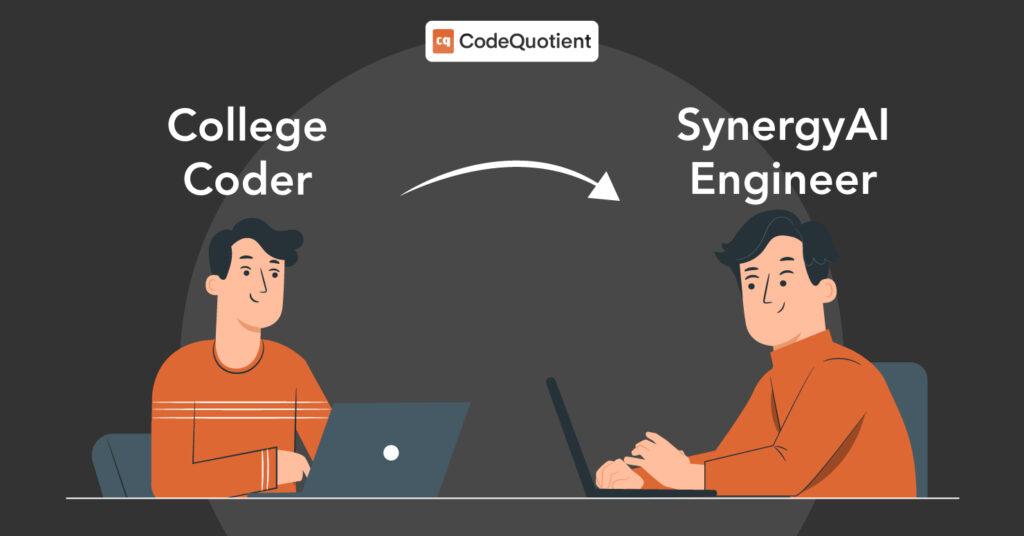Are you looking for a Python developer internship that can boost your career prospects and enhance your skills? Well, you need a well-optimised resume that can impress potential employers and showcase your abilities.
According to a report by Springboard, Python is one of the most in-demand programming languages in the job market, with an average salary of $110,840 per year.
However, this also means that the competition for Python developer internships is fierce, and you must stand out.
How can you craft a resume for a Python developer internship? Here are eight strategies to help you optimise your resume for this role.

1. Tailoring Your Resume to the Position
One of the most important steps to optimise your resume is to tailor it to the specific position you are applying for. You should review the internship description carefully and align your skills and keywords accordingly.
For example, if the internship requires experience with Django, Flask, or other web frameworks, you should mention them in your resume.
Similarly, if the internship involves working with data analysis, machine learning, or artificial intelligence, you should highlight your relevant skills and projects in these domains.
By tailoring your resume to the position, you can show that you are a suitable candidate for the role and have researched the company and its goals.
2. Clear and Concise Resume Structure
A well-organised resume is your first step towards a Python Developer internship. A clean and reader-friendly layout is essential for making a lasting impression.
Highlighting the importance of an organised design, you may utilise headings, bullet points, and fonts that bolster readability.
Tip: Categorise information logically, using headings to separate sections. Employ bullet points to concisely outline achievements, and opt for professional fonts like Arial or Calibri.
A visually appealing layout not only underscores your attention to detail but also ensures your key strengths and experiences are readily absorbed by potential employers.
3. Strong Professional Summary
A strong professional summary is a short paragraph at the beginning of your resume summarising your Python development skills and aspirations. It is an opportunity to capture the attention of recruiters and convince them that you are a qualified candidate for the internship.
An excellent professional summary should be concise yet impactful. It should showcase your qualities like:
- Python development skills: Mention the programming languages, frameworks, libraries, and tools you are proficient in.
- Relevant projects: Highlight one or two personal projects or coursework demonstrating your Python development abilities.
- Career goals: Express your interest in pursuing a Python developer internship and how it aligns with your career objectives.
Here is an example of a professional summary for a Python developer internship:
I am a computer science student with a passion for Python development. I have experience building web applications using Django, Flask, and Bootstrap. I have also completed several projects using data analysis and machine learning libraries such as NumPy, Pandas, Scikit-learn, and TensorFlow. As a Python developer intern, I am eager to learn from experienced professionals and contribute to meaningful projects.
4. Highlight Relevant Python Skills
One of the most essential parts of your resume is highlighting your relevant Python skills. These skills demonstrate your ability to perform the tasks required for the internship.
During the Python developer internship, some of the essential Python skills relevant to the internship are:
i. Programming languages
Python is the primary language you need to know, but you may also need to know other languages, such as HTML, CSS, JavaScript, SQL, etc., depending on the internship.
ii. Frameworks
These are tools that help you create web applications using Python. Some of the popular frameworks are Django, Flask, Pyramid, etc.
iii. Libraries
These are collections of code that provide specific functionalities or features. Some common libraries are NumPy, Pandas, Matplotlib, Scikit-learn, TensorFlow, etc.
iv. Tools
These software or applications help you develop, test, debug, or deploy your code. Some useful tools are Git, GitHub, PyCharm, and Jupyter Notebook.
5. Showcase Relevant Projects
Highlight your potential as a Python Developer by showcasing relevant projects on your resume. Demonstrate your coding skills and enthusiasm by including personal projects or coursework that involve Python.
To make your projects stand out, describe the problem you solved, the creative solution you implemented, and the technologies you used. This shows your ability to use Python in real-world situations, attracting the interest of potential employers.
6. Demonstrate Problem-Solving Abilities
Highlighting your problem-solving skills on your resume is paramount. Potential employers seek developers who can navigate challenges with creativity and precision. To showcase this trait effectively, share specific instances where you faced coding obstacles and triumphed.
For example, describe a situation where a complex algorithm needs optimisation. Detail the steps you took to analyse the problem, break it down, and develop an innovative solution.
Emphasise the tools or methodologies you employed to overcome the challenge, whether debugging, refactoring, or collaborating with peers.
7. Quantify Achievements and Impact
Quantifying your achievements adds a compelling dimension to your resume, allowing potential employers to gauge your impact. You provide concrete evidence of your abilities by attaching numbers to your accomplishments.
Consider using metrics such as lines of code written, highlighting your coding proficiency and workload. Describe how you streamlined a process that led to a quantifiable reduction in project completion time. This demonstrates your efficiency and contribution to project management.
8. Incorporate Keywords and Action Verbs
The final tip to optimise your resume for a Python developer internship is to incorporate keywords and action verbs that match the internship description.
Keywords are the specific terms or phrases recruiters use to screen resumes for relevant skills and qualifications. Action verbs are the words that describe what you did or achieved in your previous experiences.
By incorporating keywords and action verbs, you can increase your chances of passing the automated resume screening processes and catching the attention of recruiters.
Some examples of keywords and action verbs for a Python developer internship are:
- Keywords: Python, Django, Flask, NumPy, Pandas, Scikit-learn, TensorFlow, Git, GitHub
- Action verbs: Developed, Built, Created, Implemented, Designed, Tested, Debugged, Deployed.
Your Optimised Resume Opens Doors
A well-optimised resume can significantly improve your chances of landing a Python developer internship that can boost your career prospects and enhance your skills.
Following these eight tips, you can craft a resume showcasing your Python development skills and achievements and impress potential employers.
If you’re eager to improve your Python skills or learn new ones, CodeQuotient Academy has exciting opportunities for you. We’re here to help you become a proficient Python Developer and enhance your problem-solving abilities in C/C++ programming.
Plus, you’ll master the basics of web development, including HTML, CSS, Bootstrap, and JavaScript. Join our UGP-SE + BCA program to explore these learning experiences and unlock your full potential!




